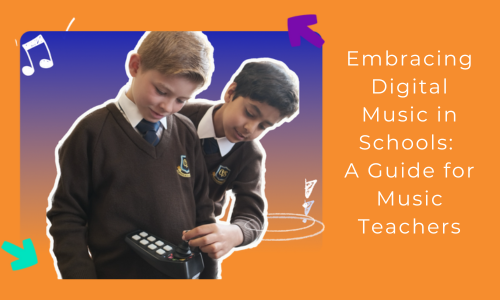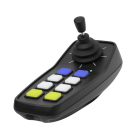Embracing Digital Music in Schools: A Guide for Music Teachers

As music education evolves, incorporating digital music into the classroom has become an essential step in engaging students and enriching their learning experiences. Here’s why adopting digital music tools and resources, like those offered by Digit Learning, can transform your music curriculum:
1. Accessibility and Inclusivity
Digital music tools make music creation accessible to all students, regardless of their physical abilities or prior musical knowledge. Instruments like CMPSR, designed by Digit Learning, simplify music production and performance, making it easier for every student to participate and express their creativity.
2. Relevance and Engagement
Integrating contemporary digital music trends into your teaching helps keep the curriculum relevant to students' lives. This approach not only makes learning more engaging but also helps students relate better to the material. Digit Learning offers a range of resources that align with current global music trends, making your lessons more dynamic and appealing.
3. Creative Potential
Digital music platforms unlock immense creative potential. Tools such as MIDI controllers and software provided by Digit Learning allow students to experiment with sounds and compositions that traditional instruments might not offer. This fosters creativity and innovation, encouraging students to explore and develop their unique musical styles.
4. Professional Development
Adopting digital music in the classroom isn't just about the students—it’s also a valuable opportunity for teachers. Digit Learning provides workshops and continuous professional development (CPD) training, ensuring that teachers are well-equipped to handle digital music tools and integrate them effectively into their teaching.
5. Comprehensive Resources
Digit Learning offers a variety of teaching resources tailored to digital music education. These resources include lesson plans, digital instruments, and learning packs designed to seamlessly integrate into your existing curriculum. This comprehensive support ensures that you have everything needed to successfully introduce digital music to your students.
6. Enhanced Learning Experiences
Digital music technology enhances learning experiences by making abstract musical concepts more concrete and interactive. Visual aids, interactive software, and real-time feedback can help students understand complex ideas more easily and enjoyably.
7. Future-Ready Skills
Incorporating digital music education prepares students for future careers in the music industry. Familiarity with music technology and production tools gives students a head start in a field that increasingly relies on digital skills.
Conclusion
By integrating digital music tools and resources from Digit Learning, music teachers can create a more inclusive, engaging, and future-oriented curriculum. Embracing these innovations not only enriches students' educational experiences but also equips them with valuable skills for their musical futures.
Free 30 day trials are avaiable for your school. Email: [email protected] or Call: 01252 619829 to arrange.
For more information on how to bring digital music into your classroom, visit Digit Learning
About author
Subscribe to our Mailing List
For news, product updates, offers and more, signup to our newsletter. See our Privacy Policy here



